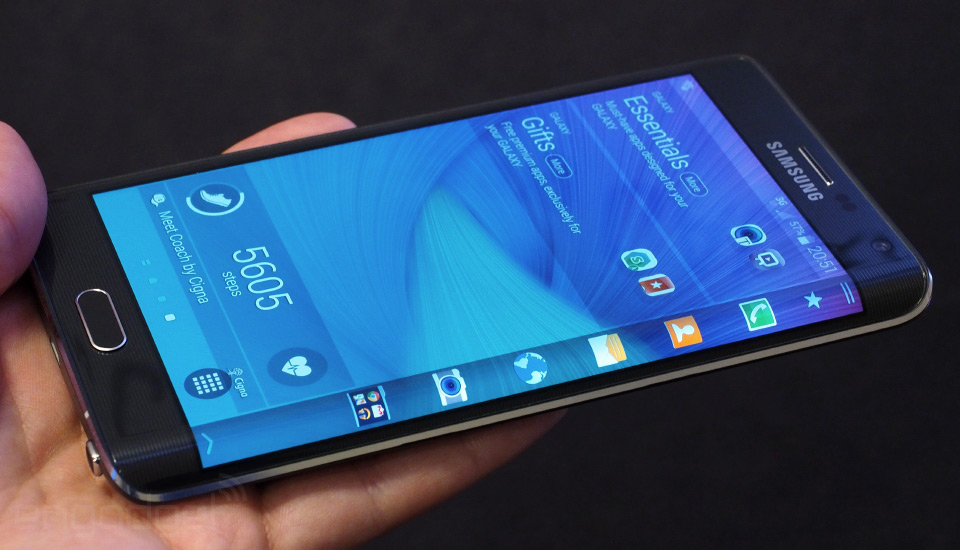This year Samsung surprised its fans with very unusual smartphone so called Samsung Galaxy Note Edge, which turned to be high-end beast and another thing making it a unique phone, is its display.
Its display is very interesting, saturation all the same high, but the color contrast is normal. Galaxy Note Edge visually looks much brighter, as well as on the screen of the mobile device is often necessary to look at least at a slight angle.
If you select a profile photo AMOLED, it was built on 32 points equally spaced on the numerical value of the shades of gray gamma curve revealed no obstruction neither light nor shadow, and the rate approximating power function is 2.27-2.28, which is slightly higher than the standard value of 2.2, while the real gamma curve deviates very little from the power dependence. In the test results of experts, Profile AMOLED gamma curve has a slightly pronounced S-shaped, which increases the apparent contrast of the image, but in the shadows distinguishable shades saved.
Recall that in the case of OLED-screen, brightness of image fragments dynamically varies according to the nature of the displayed image – decreases for light in the whole image. As a result, the resulting dependence of the brightness of the color (gamma curve), most likely, a little does not match the gamma curve static image, since the measurements were carried out at the serial output grayscale almost the entire screen. This dynamic image increases when you select the Auto screen brightness. In this case, the graph of the luminance (vertical axis) versus time (horizontal axis) during the transition from black to white and back portion of a pull-down appears, i.e. the brightness of the white area after about 0.3 starts to decrease.
Color gamut in the case of profile film AMOLED is very wide and covers almost coverage Adobe RGB. When you select a profile photo AMOLED coverage is biased to the borders of Adobe RGB. If you selected the main coverage shrinks even more, almost to the borders of sRGB. Without correction component spectra are very well separated. In the case of the profile of the main components with maximum color correction is already noticeable are mixed together.
Note that on the screen with a wide color gamut without proper color correction ordinary images that are optimized for the devices sRGB, unnatural saturated. Hence the recommendation – in most cases to watch movies, photos and all things natural is better when selecting profile main, and only if the photo was taken on installing Adobe RGB, it makes sense to switch to the profile photo AMOLED. Profile AMOLED film despite its name, is at least suitable for watching movies.
Balance shades on gray scale imperfect, but in general, acceptable. Color temperature profile film AMOLED above 6500 K, the remaining two – close to 6500 K, while the importance of the gray scale plot, this parameter does not change very much. Deviation from the blackbody spectrum (?E) in most of the gray scale is less than 10 units, for consumer device is considered a good indicator, and also slightly changed.
This all information was about the technical review of Galaxy Note Edge display and yes it is performing really good and now expectations for the futuristic gadgets from Samsung like Galaxy S7, can be set higher.



